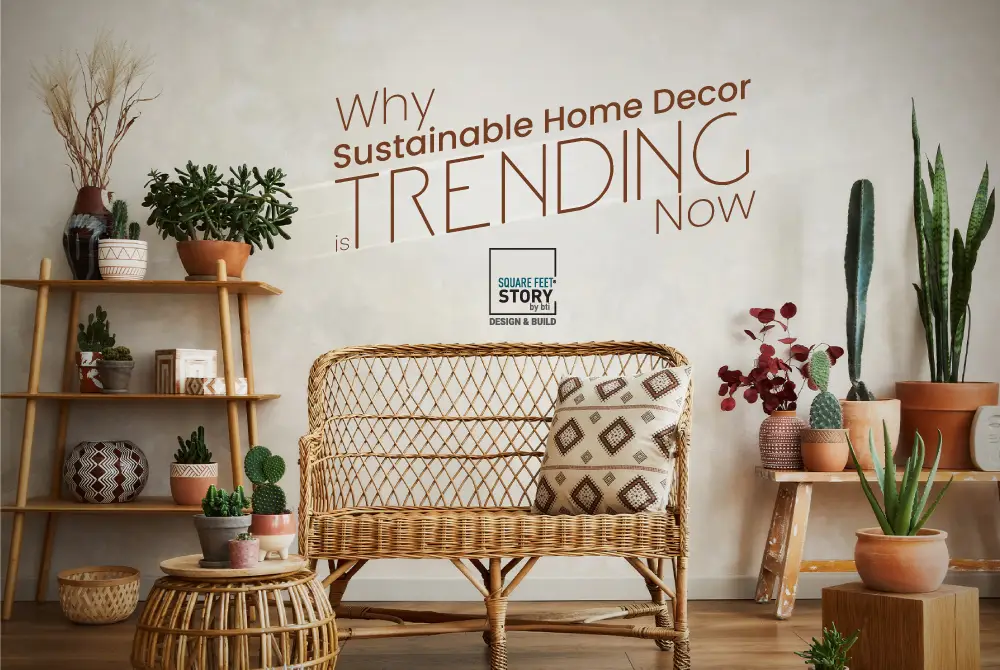
Why Sustainable Home Decor is Trending Now
Sustainable home decor has taken the interior design world by storm, capturing the attention of homeowners, designers, and eco-conscious consumers alike. From reclaimed wood furniture to organic textiles, the shift toward environmentally friendly decor reflects a broader cultural focus on sustainability. But what’s driving this trend, and why is it resonating so deeply in 2025? Let’s explore the key reasons behind the rise of sustainable home decor.
1. Growing Environmental Awareness
As climate change and environmental degradation dominate global conversations, consumers are increasingly aware of their ecological footprint. Sustainable home decor offers a way to align personal style with environmental responsibility. People are choosing products made from renewable, recycled, or biodegradable materials to reduce waste and minimize their impact on the planet. This heightened awareness, fueled by social media and eco-focused influencers, has made sustainability a priority for modern households.
2. Demand for Ethical Production
Today’s consumers are more informed about the supply chains behind their purchases. Many are opting for decor produced through ethical practices, such as fair trade, cruelty-free materials, and low-impact manufacturing. Brands that prioritize transparency—detailing where materials come from and how items are made—are gaining traction. For example, handwoven rugs from artisans using natural dyes or furniture crafted from reclaimed materials appeal to buyers who value both aesthetics and ethics.
3. Unique Aesthetic Appeal
Sustainable decor isn’t just about saving the planet—it’s also stylish. Natural materials like bamboo, cork, jute, and reclaimed wood bring warmth, texture, and character to spaces. These elements align perfectly with popular design trends like biophilic design, which emphasizes a connection to nature, and minimalist aesthetics that prioritize quality over quantity. The unique, often handcrafted nature of sustainable pieces adds a one-of-a-kind charm that mass-produced items can’t match.
4. Cost Savings Over Time
While sustainable decor can have a higher upfront cost, it often proves more economical in the long run. High-quality, durable materials like solid wood or organic cotton last longer than their fast-furniture counterparts, reducing the need for frequent replacements. Additionally, energy-efficient decor, such as LED lighting or smart home systems, can lower utility bills, making sustainability both eco-friendly and wallet-friendly.
5. Rise of Circular Economy
The concept of a circular economy—where products are reused, repurposed, or recycled—has gained momentum. Sustainable home decor fits this model by emphasizing upcycled or second-hand items, such as vintage furniture or repurposed industrial materials. Thrift stores, online marketplaces like Etsy, and brands specializing in refurbished goods are making it easier for consumers to embrace this trend, reducing waste while adding character to their homes.
6. Influence of Social Media and Design Trends
Platforms like Instagram, Pinterest, and TikTok have amplified the visibility of sustainable decor. Influencers showcase eco-friendly homes with lush greenery, natural fibers, and artisanal pieces, inspiring followers to adopt similar styles. Hashtags like #SustainableLiving and #EcoHome have millions of posts, creating a community of like-minded individuals who champion green design. This social media buzz has turned sustainable decor into a cultural movement.
7. Support for Local and Small Businesses
Sustainable decor often goes hand-in-hand with supporting local artisans and small businesses. Consumers are drawn to unique, handmade items that tell a story, whether it’s a ceramic vase from a local potter or a recycled glass lamp from a small studio. This trend reflects a desire to move away from mass-produced goods and invest in pieces that support communities and reduce the carbon footprint of global shipping.
8. Health and Wellness Benefits
Sustainable decor often prioritizes non-toxic, natural materials, which contribute to healthier indoor environments. For example, paints with low or no volatile organic compounds (VOCs), organic bedding, and natural fiber rugs reduce exposure to harmful chemicals. As people spend more time at home—especially post-pandemic—there’s a growing focus on creating spaces that promote physical and mental well-being.
How to Embrace Sustainable Home Decor
- Choose Quality Over Quantity: Invest in durable, timeless pieces that won’t need frequent replacing.
- Shop Second-Hand: Explore thrift stores, flea markets, or online platforms for unique, pre-loved items.
- Opt for Natural Materials: Look for products made from bamboo, linen, hemp, or reclaimed wood.
- Support Ethical Brands: Research companies with transparent, eco-friendly practices.
- Incorporate Plants: Add greenery to purify air and enhance biophilic design.
- DIY and Upcycle: Repurpose old furniture or create decor from reclaimed materials for a personal touch.
Why It Matters
The rise of sustainable home decor reflects a broader shift toward mindful consumption and environmental stewardship. By choosing eco-friendly materials and supporting ethical brands, consumers can create beautiful, functional spaces while contributing to a healthier planet. This trend isn’t just a passing fad—it’s a movement toward a more sustainable future, one home at a time.
Whether you’re refreshing a single room or overhauling your entire space, sustainable decor offers a way to express your style while making a positive impact. As the trend continues to grow, it’s clear that sustainability is here to stay in the world of home design.

